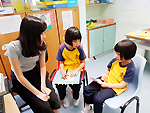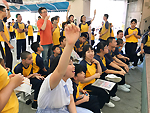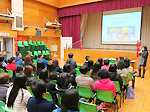Speech Therapy Services
Aim
Provide professional assessment and diagnosis for students with communication barriers and issues (such as sentence structure, comprehension abilities, oral-motor coordination, etc.), set appropriate goals, and enhance students' language comprehension, expression, and social interaction abilities for effective communication.
Service Mode
Provide different forms of therapy services based on students' abilities.

|

|

|

|
1. Individual Therapy: Set appropriate annual goals for students and conduct intensive training to effectively improve their pronunciation, oral-motor coordination, language, and communication abilities.
2. Group Training: Provide different types of group training (such as language use groups, situational communication groups) to enhance communication and interaction among students and develop appropriate language use skills for effective communication with others.
3. Cross-disciplinary Collaboration: Collaborate with different subject groups (including high school curriculum, counseling program for children with autism, Chinese language, work training) to provide in-class support and integrate communication elements into different subjects.
4. Whole-school Approach: In addition to serving as the emcee for morning assembly and conducting interviews, students are also encouraged to share their experiences and opinions on stage during breaks to build confidence in public speaking.
5. Parent Training: Maintain close contact with parents through phone calls, meetings, and classroom observations, and hold parent-child communication workshops to help parents better understand their children and learn communication techniques.